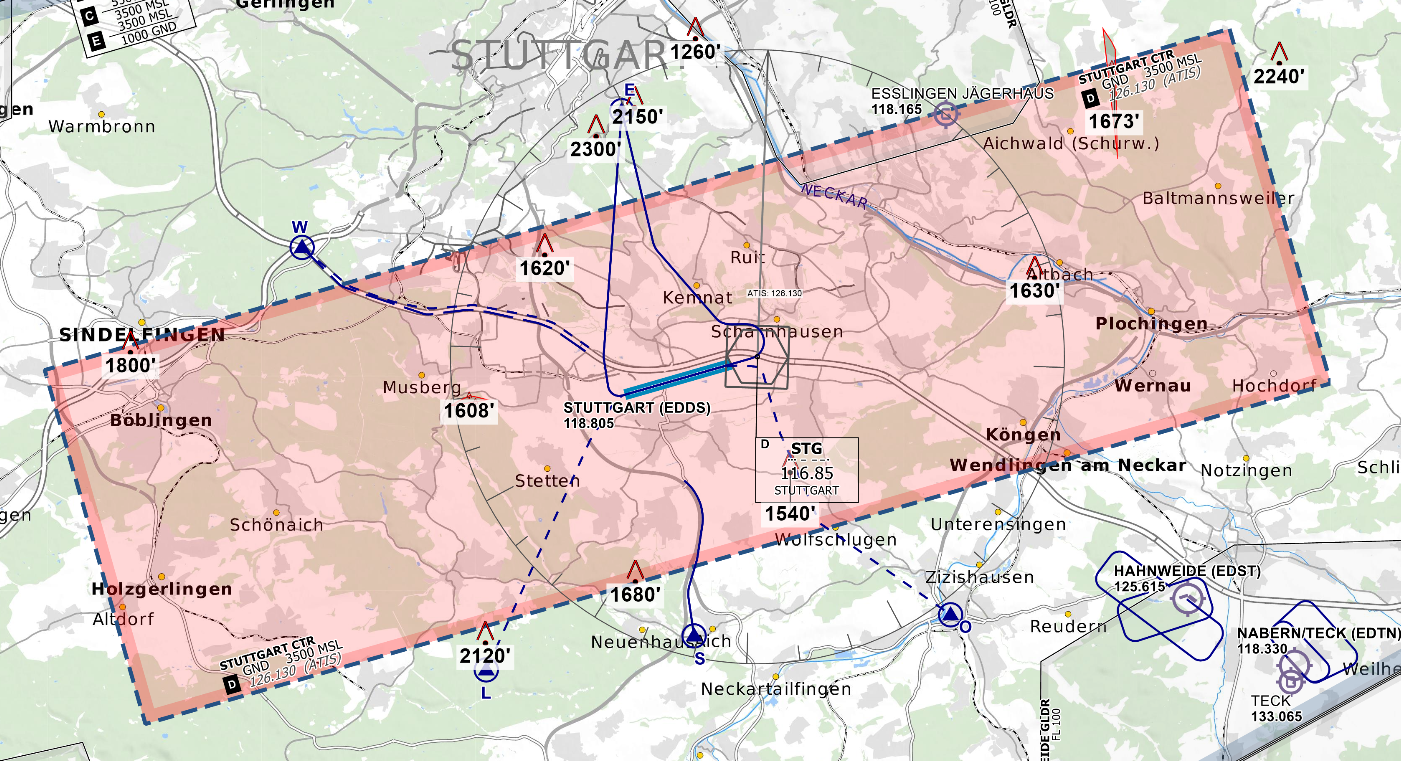Control zone (D-CTR)
A control zone (CTR) is the controlled airspace in the immediate vicinity of a commercial airport or larger aerodrome. The responsible authority is a tower, which in reality operates mainly by sight. The radar screen only serves as support.
The control zone has some special features compared to other controlled airspace:
- It always has the ground (GND) as its lower limit, whereas a control area (i.e. all other controlled airspace that is not defined as a control zone) never extends to the ground.
- SVFR (special flights under visual flight rules) is possible in a control zone in order to enable landings / departures at controlled airports even in bad weather under certain conditions.
- Additional VFR minima:
- Ground visibility: 5 km
- Ceiling: 1500 ft
Characteristics
In Germany, control zones are classified as delta airspace without exception. Therefore, all rules that apply in ‘normal’ delta airspace also apply in these zones. Depending on the volume of traffic, control zones can also be kept active only temporarily - either defined by the operating hours of the aerodrome (e.g. 06:00 - 20:00 locally) or activated when required (e.g. approaching IFR traffic). Such temporarily active airspaces can be recognised on charts by the suffix (HX) - e.g. D(HX). When inactive, the classification of the general airspace structure applies (see further links).
Control zones can be recognised on the German ICAO map by the reddish coloring of the area of responsibility.
While instrument flight traffic mainly flies published procedures (e.g. an ILS approach or a SID) in and out of the control zone, mandatory reporting points are usually used for VFR, regulating entries and exits. More details are defined in the Standard Operating Procedures of the respective aerodrome.
 Control zone Stuttgart - © openflightmaps.org
Control zone Stuttgart - © openflightmaps.org
Further links
- Airspace structure and visual flught rules in Germany, Deutsche Flugsicherung GmbH
